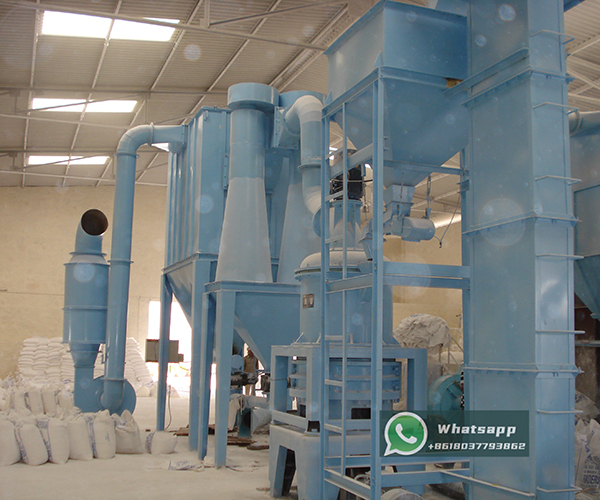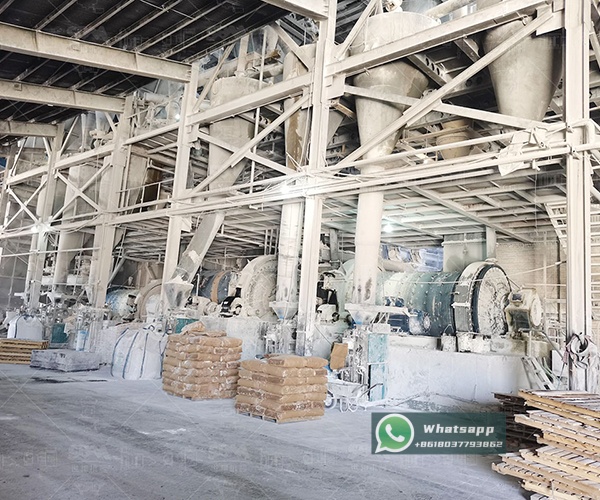The electrical insulation and cable industry demands materials of exceptional purity, consistency, and performance. Among the critical minerals used, talc stands out for its unique combination of electrical insulation properties, thermal stability, and reinforcement capabilities. However, the efficacy of talc in these high-stakes applications is directly contingent upon its particle size distribution and morphological characteristics. This article delves into the technical requirements for ultrafine talc in electrical applications and explores the advanced grinding technologies necessary to achieve these stringent specifications.
Talc, a hydrous magnesium silicate, is a naturally hydrophobic mineral with a lamellar (plate-like) structure. This structure is paramount for its function in cable insulation and jacketing. When finely ground and properly dispersed, these platelets create a tortuous path that impedes the tracking of electrical current, significantly enhancing the dielectric strength of the polymer composite. Furthermore, talc improves the mechanical properties of cables, such as stiffness, creep resistance, and heat deflection temperature, making them more durable and reliable under various environmental stresses.
The transition from standard talc powders to ultrafine grades marks a significant leap in performance. Ultrafine talc, typically with a top cut (D97) below 10 microns and often extending into the sub-micron range, offers a vastly increased surface area. This leads to a more homogeneous dispersion within the polymer matrix, resulting in superior insulation properties, improved surface finish, and enhanced mechanical strength at lower loading levels compared to coarser talcs.

Producing talc suitable for the electrical industry is not merely about achieving a fine particle size; it involves overcoming several interconnected challenges:
Meeting the demands of the electrical industry requires more than conventional crushing and milling. It necessitates technology that can precisely control the grinding mechanism, temperature, and classification in an integrated system. As a leading manufacturer in this field, Shanghai Zenith Machinery Co., Ltd. has developed grinding mills that are ideally suited for this task.
For the most demanding applications requiring a superfine and uniform product, the LUM Ultrafine Vertical Mill represents a top-tier solution. Its design is particularly beneficial for talc as it combines grinding, classification, and drying in a single unit. The grinding mechanism, which utilizes multiple rollers applying pressure to a rotating grinding plate, is well-suited for the delamination of lamellar minerals like talc. The integrated high-efficiency classifier ensures that only particles meeting the target fineness leave the grinding chamber, allowing for precise control over the top cut and PSD. This is critical for achieving the consistent dielectric properties required in cable insulation.
The technical parameters for the LUM series demonstrate its capability for high-capacity production of ultrafine powders:
| Model | Main machine power (kW) | Capacity (t/h) | Size distribution D97 (μm) |
|---|---|---|---|
| LUM1525 | 220-250 | 1.6-11.5 | 5-30 |
| LUM1632 | 280-315 | 2.0-13.5 | 5-30 |
| LUM1836 | 355-400 | 2.3-15 | 5-30 |
Furthermore, the LUM mill’s intelligent control system allows for automated operation and real-time monitoring of key parameters, ensuring stable product quality and simplifying maintenance.

Another excellent option from Zenith’s portfolio for producing electrical-grade talc is the XZM Ultrafine Grinding Mill. This mill is renowned for its reliability and ability to produce powders in the range of 325-2500 mesh (45-5 microns). Its working principle involves a high-speed rotating blade assembly that creates a violent turbulence zone, causing the talc particles to impact and rub against each other. This method is effective in achieving ultrafineness while helping to preserve the lamellar structure through a combination of impact and attrition forces.
The XZM mill is a robust and versatile solution for talc producers looking for a balance between capital investment and performance. Key parameters for select models are shown below:
| Model | Working diameter (mm) | Max feed size (mm) | Final size (mesh) | Output (kg/h) | Main motor power (kW) |
|---|---|---|---|---|---|
| XZM221 | Φ800 | ≤20 | 325-2500 | 500-4500 | 75 |
| XZM268 | Φ1680 | ≤20 | 325-2500 | 5000-25000 | 315 |
The production of ultrafine talc for the electrical insulation and cable industry is a sophisticated process that directly impacts the safety, efficiency, and longevity of electrical systems worldwide. Success in this field hinges on selecting the right grinding technology—one that can deliver the requisite fineness, preserve the mineral’s beneficial structure, and ensure operational efficiency and purity.
Shanghai Zenith Machinery Co., Ltd., with its deep expertise and comprehensive range of advanced grinding equipment like the LUM Ultrafine Vertical Mill and XZM Ultrafine Grinding Mill, is uniquely positioned to be a valuable partner. By leveraging such technology, talc producers can consistently meet the exacting standards of the electrical industry, contributing to the development of higher-performance, more reliable cables for the future.
